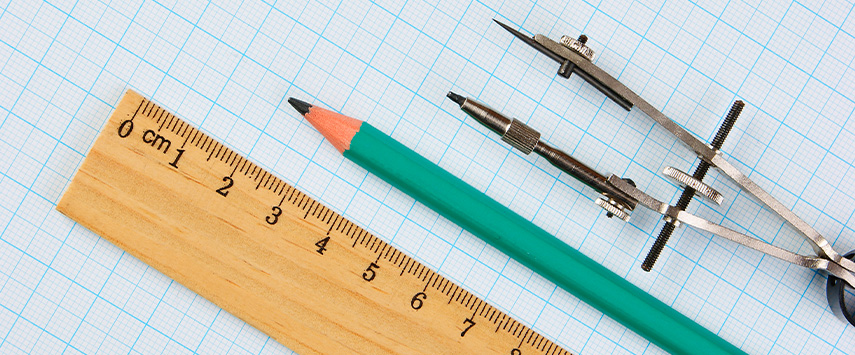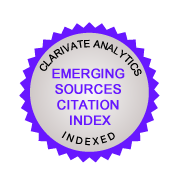The Positive and Negative Impact of Online Social Ties on PA Behaviour
A Qualitative Analysis in Chinese Adolescents
DOI:
https://doi.org/10.7160/eriesj.2025.180306Keywords:
Physical activity, online social ties, social influence, Chinese adolescents, social support, social media, online social networkingAbstract
The continuing downward trend in low physical activity levels among Chinese adolescents increases the risk of obesity and negative mood and is associated with poorer mental and physical health. Integrating physical activity within one’s social relationships influences physical activity behaviour. Although strong social ties, such as family members, peers, and educators, are influential on adolescents' physical activity, it is also acknowledged that adolescents may build social ties through social media, potentially impacting their physical activity behavior. The current study aimed to gain a deeper understanding of Chinese adolescents’ social ties in social media and how this might impact their physical activity behaviour. For this purpose, a qualitative study design was used. We conducted 13 qualitative focus groups that sampled 74 Chinese adolescents. Social support and perceived barriers were identified. Consistent with social ties-related theory (e.g., social integration theory, social engagement theory, etc.), our findings emphasize the need for incorporating the positive influences of strong social ties of peers and parents, as well as weak and peripheral ties of fitness influencers and people from the online PA community with similar PA interests, into the design of social media interventions.
References
Ao, D., Wu, F., Yun, C.-F. and Zheng, X.-Y. (2019) ‘Trends in physical fitness among 12-year-old children in urban and rural areas during the social transformation period in China’, Journal of Adolescent Health, Vol. 64, No. 2, pp. 250–257. https://doi.org/10.1016/j.jadohealth.2018.08.021
Aschwanden, R., von Lindeman, A., Huber, L. and Maier, J. (2024) ‘How influencers motivate inactive adolescents to be more physically active: A qualitative study’, Frontiers in Public Health, Vol. 12, p. 1429850. https://doi.org/10.3389/fpubh.2024.1429850
Bull, F.C., Al-Ansari, S.S., Biddle, S.J.H., Borodulin, K., Buman, M.P., Cardon, G., Carty, C., Chaput, J.P., Chastin, S., Chou, R., Dempsey, P.C., DiPietro, L., Ekelund, U., Firth, J., Friedenreich, C.M., Garcia, L., Gichu, M., Jago, R., Katzmarzyk, P.T., Lambert, E., Leitzmann, M., Milton, K., Ortega, F.B., Ranasinghe, C., Stamatakis, E., Tiedemann, A., Troiano, R.P., van der Ploeg, H.P., Wari, V. and Willumsen, J.F. (2020) ‘World Health Organization 2020 guidelines on physical activity and sedentary behaviour’, British Journal of Sports Medicine, Vol. 54, No. 24, pp. 1451–1462. https://doi.org/10.1136/bjsports-2020-102955
Carrotte, E. R., Prichard, I. and Lim, M.S.C. (2017) ‘“Fitspiration” on social media: A content analysis of gendered images’, Journal of Medical Internet Research, Vol. 19, No. 3, e95. https://doi.org/10.2196/jmir.6368
Centers for Disease Control and Prevention (CDC) (2024) Physical activity guidelines for school-aged children and adolescents. Available at: https://www.cdc.gov/physical-activity-education/guidelines/ (Accessed: 9 September 2025)
Chen, P. (2017) ‘Physical activity, physical fitness, and body mass index in the Chinese child and adolescent populations: An update from the 2016 physical activity and fitness in China—the youth study’, Journal of Sport and Health Science, Vol. 6, No. 4, pp. 381–388. https://doi.org/10.1016/j.jshs.2017.09.011
Chen, S.-T., Liu, Y., Tremblay, M.S., Hong, J.-T., Tang, Y., Cao, Z.-B. et al. (2021) ‘Meeting 24-h movement guidelines: Prevalence, correlates, and the relationships with overweight and obesity among Chinese children and adolescents’, Journal of Sport and Health Science, Vol. 10, No. 3, pp. 349–359. https://doi.org/10.1016/j.jshs.2020.07.002
Cohen, S. (2004) ‘Social relationships and health’, American Psychologist, Vol. 59, No. 8, pp. 676–684. https://doi.org/10.1037/0003-066x.59.8.676
Creswell, J.W. and Miller, D.L. (2000) ‘Determining validity in qualitative inquiry’, Theory into Practice, Vol. 39, No. 3, pp. 124–130. https://doi.org/10.1207/s15430421tip3903_2
Dong, Y., Lau, P.W., Dong, B., Zou, Z., Yang, Y., Wen, B. et al. (2019) ‘Trends in physical fitness, growth, and nutritional status of Chinese children and adolescents: A retrospective analysis of 1.5 million students from six successive national surveys between 1985 and 2014’, The Lancet Child & Adolescent Health, Vol. 3, No. 12, pp. 871–880. https://doi.org/10.1016/s2352-4642(19)30302-5
Durau, J., Diehl, S. and Terlutter, R. (2022) ‘Motivate me to exercise with you: The effects of social media fitness influencers on users’ intentions to engage in physical activity and the role of user gender’, Digital Health, Vol. 8, 20552076221102769. https://doi.org/10.1177/20552076221102769
Easton, S., Morton, K., Tappy, Z., Francis, D. and Dennison, L. (2018) ‘Young people’s experiences of viewing the Fitspiration social media trend: Qualitative study’, Journal of Medical Internet Research, Vol. 20, No. 6, e219. https://doi.org/10.2196/jmir.9156
Engel, E., Hurley, E., Biello, S. and Fedele, D.A. (2024) ‘Social media influencers and adolescents’ health: A scoping review’, Social Science & Medicine, Vol. 340, p. 116387. https://doi.org/10.1016/j.socscimed.2023.116387
Fardouly, J., Willburger, B.K. and Vartanian, L.R. (2017) ‘Instagram use and young women’s body image concerns and self-objectification: Testing mediational pathways’, New Media & Society, Vol. 20, No. 4, pp. 1380–1395. https://doi.org/10.1177/1461444817694499
Fingerman, K.L. (2009) ‘Consequential strangers and peripheral ties: The importance of unimportant relationships’, Journal of Family Theory & Review, Vol. 1, No. 2, pp. 69–86. https://doi.org/10.1111/j.1756-2589.2009.00010.x
Gilbert, E. (2012) ‘Predicting tie strength in a new medium’, Proceedings of the ACM 2012 Conference on Computer Supported Cooperative Work, New York: ACM. https://doi.org/10.1145/2145204.2145360
Goodyear, V.A., Armour, K.M. and Wood, H. (2018) ‘Young people and their engagement with health-related social media: New perspectives’, Sport, Education and Society. Vol. 24, No. 7, pp. 673–688. https://doi.org/10.1080/13573322.2017.1423464
Granger, E., Di Nardo, F. and Harrison, A. (2017) ‘A systematic review of the relationship of physical activity and self-reported health status in adolescents’, European Journal of Public Health, Vol. 27, Suppl. 2, pp. 100–106. https://doi.org/10.1093/eurpub/ckx187
Granovetter, M.S. (1973) ‘The strength of weak ties’, American Journal of Sociology, Vol. 78, No. 6, pp. 1360–1380. Retrieved from: https://snap.stanford.edu/class/cs224w-readings/granovetter73weakties.pdf
Horton, D. and Wohl, R.R. (1956) ‘Mass communication and para-social interaction: Observations on intimacy at a distance’, Psychiatry, Vol. 19, No. 3, pp. 215–229. https://doi.org/10.1080/00332747.1956.11023049
Jia, Y., Wu, J., Zhang, H., Li, X. and Chen, P. (2025) ‘Effects of group communication norms on daily steps in a team competition using WeRun’, International Journal of Behavioral Nutrition and Physical Activity, Vol. 22, p. 59. https://doi.org/10.1186/s12966-025-01559-2
Kassel, J. D., Stroud, L. R. and Paronis, C. A. (2003) ‘Smoking, stress, and negative affect: Correlation, causation, and context across stages of smoking’, Psychological Bulletin, Vol. 129, No. 2, pp. 270–304. https://doi.org/10.1037/0033-2909.129.2.270
Krueger, R. A. (2014) Focus groups: A practical guide for applied research. Thousand Oaks: Sage.
Lee, S., Koffer, R. E., Sprague, B. N., Charles, S. T., Ram, N. and Almeida, D. M. (2018) ‘Activity diversity and its associations with psychological well-being across adulthood’, The Journals of Gerontology: Series B, Vol. 73, No. 6, pp. 985–995. https://doi.org/10.1093/geronb/gbw118
Litwin, H. and Stoeckel, K. J. (2016) ‘Social network, activity participation, and cognition: A complex relationship’, Research on Aging, Vol. 38, No. 1, pp. 76–97. https://doi.org/10.1177/0164027515581422
Lou, C. and Yuan, S. (2019) ‘Influencer marketing: How message value and credibility affect consumer trust of branded content on social media’, Journal of Interactive Advertising, Vol. 19, No. 1, pp. 58–73. https://doi.org/10.1080/15252019.2018.1533501
McDonald, T. (2016) Social media in rural China: Social networks and moral frameworks. London: UCL Press.
McLean, S. A., Wertheim, E. H., Marques, M. D. and Paxton, S. J. (2019) ‘Dismantling prevention: Comparison of outcomes following media literacy and appearance comparison modules in a randomised controlled trial’, Journal of Health Psychology, Vol. 24, No. 6, pp. 761–776. https://doi.org/10.1177/1359105316678668
Pearlin, L. I., Schieman, S., Fazio, E. M. and Meersman, S. C. (2005) ‘Stress, health, and the life course: Some conceptual perspectives’, Journal of Health and Social Behavior, Vol. 46, No. 2, pp. 205–219. https://doi.org/10.1177/002214650504600206
Pilgrim, K. and Bohnet-Joschko, S. (2019) ‘Selling health and happiness: How influencers communicate on Instagram about dieting and exercise’, BMC Public Health, Vol. 19, No. 1, 1054. https://doi.org/10.1186/s12889-019-7387-8
Prichard, I. and Tiggemann, M. (2008) ‘Relations among exercise type, self-objectification, and body image in the fitness centre environment: The role of reasons for exercise’, Psychology of Sport and Exercise, Vol. 9, No. 6, pp. 855–866. https://doi.org/10.1016/j.psychsport.2007.10.005
Rubin, R.B. and McHugh, M.P. (1987) ‘Development of parasocial interaction relationships’, Journal of Social and Personal Relationships, Vol. 31, No. 3, pp. 161–172. https://doi.org/10.1080/08838158709386664
Sohn, M. and Lee, J. (2007) ‘Up health: Ubiquitously persuasive health promotion with an instant messaging system’, CHI07: Extended Abstracts on Human Factors in Computing Systems, New York: ACM. https://doi.org/10.1145/1240866.1241059
Song, C., Gong, W., Ding, C., Yuan, F., Zhang, Y. and Feng, G. et al. (2019) ‘Physical activity and sedentary behavior among Chinese children aged 6–17 years: A cross-sectional analysis of 2010–2012 China national nutrition and health survey’, BMC Public Health, Vol. 19, No. 1, 936. https://doi.org/10.1186/s12889-019-7259-2
Taylor, S. E., Repetti, R. L. and Seeman, T. (1997) ‘Health psychology: What is an unhealthy environment and how does it get under the skin?’, Annual Review of Psychology, Vol. 48, No. 1, pp. 411–447. https://doi.org/10.1146/annurev.psych.48.1.411
Thomas, P.A. (2012) ‘Trajectories of social engagement and mortality in late life’, Journal of Aging and Health, Vol. 24, No. 4, pp. 547–568. https://doi.org/10.1177/0898264311432310
Tiggemann, M. and Zaccardo, M. (2018) ‘“Strong is the new skinny”: A content analysis of #fitspiration images on Instagram’, Journal of Health Psychology, Vol. 23, No. 8, pp. 1003–1011. https://doi.org/10.1177/1359105316639436
Umberson, D., Crosnoe, R. and Reczek, C. (2010) ‘Social relationships and health behavior across the life course’, Annual Review of Sociology, Vol. 36, No. 1, pp. 139–157. https://doi.org/10.1146/annurev-soc-070308-120011
Wang, L., Zhao, Y., Li, M. and Huang, Z. (2024) ‘Influence of social media fitness influencers’ credibility on users’ physical activity intentions’, Digital Health, Vol. 10, p. 20552076241234567. https://doi.org/10.1177/20552076241234567
Whitley, R. and Crawford, M. (2005) ‘Qualitative research in psychiatry’, Canadian Journal of Psychiatry, Vol. 50, No. 2, pp. 108–114. https://doi.org/10.1177/070674370505000206
Zhang, M., Li, H. and Chen, Y. (2024) ‘Maintaining healthy lifestyle through fitness app use: A parallel mediation model from a nationwide survey’, Frontiers in Public Health, Vol. 12, p. 1234567. https://doi.org/10.3389/fpubh.2024.1234567
Additional Files
Published
How to Cite
Issue
Section
License
Copyright (c) 2025 Min Cui, Anika Frühauf, Anne Kerstin Reimers, Yolanda Demetriou, Claus Krieger

This work is licensed under a Creative Commons Attribution 4.0 International License.
Authors declare with this manuscript intended for publication to ERIES Journal that:
- all co-authors agree with the publication of the manuscript even after amendments arising from peer review;
- all co-authors agree with the posting of the full text of this work on the web page of ERIES Journal and to the inclusion of references in databases accessible on the internet;
- no results of other researchers were used in the submitted manuscript without their consent, proper citation, or acknowledgement of their cooperation or material provided;
- the results (or any part of them) used in the manuscript have not been sent for publication to any other journal nor have they already been published (or if so, that the relevant works are cited in this manuscript);
- submission of the manuscript for publication was completed in accordance with the publishing regulations pertaining to place of work;
- experiments performed comply with current laws and written consent of the Scientific Ethics Committee / National Animal Care Authority (as is mentioned in the manuscript submitted);
- grant holders confirm that they have been informed of the submitted manuscript and they agree to its publication.
Authors retain copyright and grant ERIES Journal right of first publication with the work simultaneously licensed under a Creative Commons Attribution License that allows others to share the published work with an acknowledgement of its initial publication in ERIES Journal. Moreover, authors are able to post the published work in an institutional repository with an acknowledgement of its initial publication in ERIES Journal. In addition, authors are permitted and encouraged to post the published work online (e.g. institutional repositories or on their website) as it can lead to productive exchanges, as well as earlier and greater citation of published work.






